-
Posts
2,778 -
Joined
-
Last visited
-
Days Won
49
Content Type
Profiles
Forums
Downloads
Blogs
Events
Store
Posts posted by FizziksGuy
-
-
SimuLAB: Projectile Motion (Excel)
Projectile motion simulation lab activity using an Excel spreadsheet. Students input angle, launch speed and can trace path of projectile, view velocity vector, etc.
Thanks to Ed Pogozelski (SUNY Geneseo) and Dan Baker (U of Rochester) for their assistance in creating this activity.
-
Submitter
-
Submitted10/05/2015
-
Category
-
-
LAB: Popper Lab
Write up for an open-ended "popper" lab in which students use their kinematic equations to determine the launch velocity of a popper toy.
Popper toys can be found in a variety of places such as Amazon, CVS and Wal-Mart, as well as Oriental Trading.
CVS Spring Toys item number is SKU# 439412, bar code 50428 06656, "Spring Up & Catch Game", $2.99 each or 2/$5
Walmart item number is #ES-41035, 6 to a package for $2.98, called the "Sport Pop-Up Game", bar code 79940 41035
-
Submitter
-
Submitted09/30/2015
-
Category
-
-
LAB: How Does a Ball Roll
View File
Students use their knowledge of acceleration and kinematic equations to find the acceleration of two different balls rolling down an incline. A nice "early lab activity" following introduction of the kinematic equations to get students a hands-on application of their problem-solving principles as well as continued development of general measurement and lab procedures.
-
Submitter
-
Submitted09/21/2015
-
Category
-
-

Name: Super Fast Cameras
Category: Other
Date Added: 2015-09-21
Submitter: FizziksGuyResearchers at MIT have created a camera with a resolution of one frame per trillionth of a second, allowing them to film light as it travels.
Super Fast Cameras -
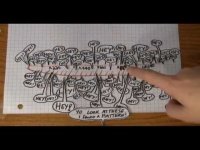
Name: Vi Hart: What's Up With Noises
Category: Sound & Music
Date Added: 2015-09-10
Submitter: FizziksGuy -

Name: Einstein's Most Famous Equation
Category: Modern Physics
Date Added: 2015-09-09
Submitter: FizziksGuyPublished on Mar 12, 2015In 1905, Einstein published four papers that radically changed how we look at the world around us. Dubbed Einstein’s “Annus Mirabilis,” or “Year of Wonders,” it gave us revolutionary new ideas about light, atoms and how your frame of reference makes a big difference in your perception.
But it was Einstein’s final paper that year that really took the cake. In it, he gave us a deceptively simple idea—that mass and energy were equivalent. He even summed it up for us with the tiny equation E=mc^2.
Video by Chris Smith for Symmetry magazine.
Einstein's Most Famous Equation -

Name: Newton's Laws: Physics Concept Trailer
Category: Dynamics
Date Added: 2015-09-09
Submitter: FizziksGuy -

Name: Electric Fields: Physics Concept Trailer
Category: Electricity & Magnetism
Date Added: 2015-09-09
Submitter: FizziksGuy -

Name: DC Circuits: Physics Concept Trailer
Category: Electricity & Magnetism
Date Added: 2015-09-09
Submitter: FizziksGuy -

Name: Waves and Sound: Physics Concept Trailer
Category: Sound & Music
Date Added: 2015-09-09
Submitter: FizziksGuy -

Name: Statics and Torque: Physics Concept Trailer
Category: Rotational Motion
Date Added: 2015-09-09
Submitter: FizziksGuy -

Name: Gravitation: Physics Concept Trailer
Category: Circular Motion & Gravity
Date Added: 2015-09-09
Submitter: FizziksGuy -

Name: Rotational Motion: Physics Concept Trailer
Category: Rotational Motion
Date Added: 2015-09-09
Submitter: FizziksGuy -
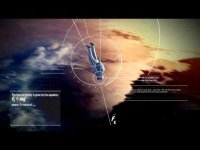
Name: Terminal Velocity: Physics Concept Trailer
Category: Dynamics
Date Added: 2015-09-09
Submitter: FizziksGuy -

Name: One-Dimensional Kinematics: Physics Concept Trailer
Category: Kinematics
Date Added: 2015-09-09
Submitter: FizziksGuy -

Name: Friction And Angular Motion: Physics Concept Trailer
Category: Circular Motion & Gravity
Date Added: 2015-09-09
Submitter: FizziksGuy -

Name: Collisions: Physics Concept Trailer
Category: Momentum and Collisions
Date Added: 2015-09-09
Submitter: FizziksGuy -
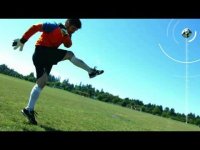
Name: Two-Dimensional Kinematics: Physics Concept Trailer
Category: Kinematics
Date Added: 2015-09-09
Submitter: FizziksGuy -
Hi Gretch. The APlusPhysics Regents Physics videos which are on this site and on YouTube are also available in DVD form from Amazon.com. Just search for "APlusPhysics DVD". There's a series of 7 DVDs that cover the entire course. Good luck!
-
When you're solving for Vfy, recall that we called down the positive direction. Therefore, the square root that you want is the positive root (we know the ball is moving down), so vfy=+4.75 m/s, indicating it's moving downward at 4.75 m/s. (You'll find the rest of the solution on the next page of the book). Hope that helps!
-
Nicely done Daemidra.
-
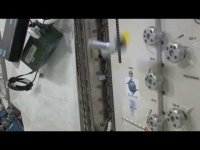
Name: Dancing T-Handle in Zero-G
Category: Rotational Motion
Date Added: 2015-08-26
Submitter: FizziksGuyHD video of the installation handle on Space-DRUMS in free floating rotation showing a bi-stable state due to intermediate moments of inertia.
Dancing T-Handle in Zero-G -
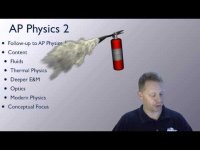
Name: Which AP Physics Course Should I Take?
Category: Introductory Concepts
Date Added: 2015-08-13
Submitter: FizziksGuyThis course describes the four different AP Physics courses available from the College Board and which one might best fit your needs. Thanks to Jonathan Thomas-Palmer and Flipping Physics for such a fun collaboration! For more information, please visit FlippingPhysics.com and/or APlusPhysics.com.
Which AP Physics Course Should I Take? -



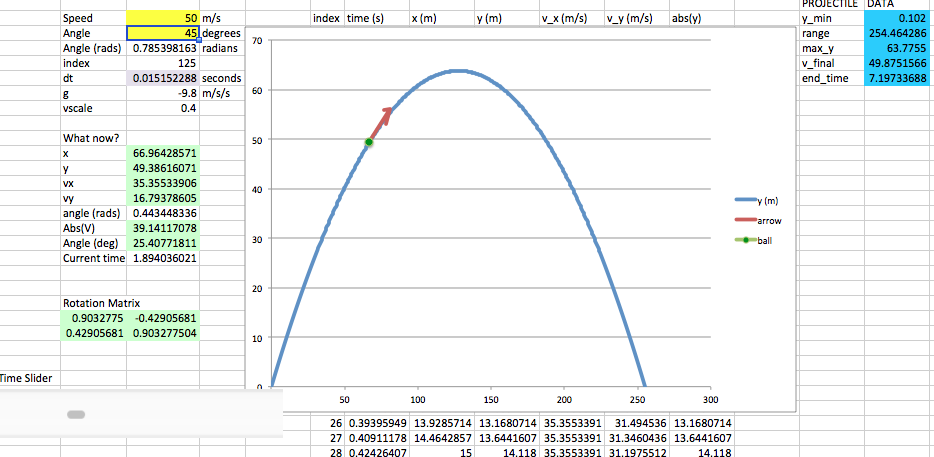


Video Discussion: Newton's Laws of Motion in Space: Force, Mass, and Acceleration
In Video Discussions
Posted
Name: Newton's Laws of Motion in Space: Force, Mass, and Acceleration
Category: Dynamics
Date Added: 2015-10-07
Submitter: FizziksGuy
ESA Science - Newton In Space (Part 2): Newton's Second Law of Motion - Force, Mass And Acceleration.
Newton's laws of motion are three physical laws that form the basis for classical mechanics. They have been expressed in several different ways over nearly three centuries.
---
Please subscribe to Science & Reason:
• http://www.youtube.com/Best0fScience
• http://www.youtube.com/ScienceMagazine
• http://www.youtube.com/FFreeThinker
---
The laws describe the relationship between the forces acting on a body and the motion of that body. They were first compiled by Sir Isaac Newton in his work "Philosophiæ Naturalis Principia Mathematica", first published on July 5, 1687.
Newton used them to explain and investigate the motion of many physical objects and systems. For example, in the third volume of the text, Newton showed that these laws of motion, combined with his law of universal gravitation, explained Kepler's laws of planetary motion.
---
Newton's Second Law of Motion: A body will accelerate with acceleration proportional to the force and inversely proportional to the mass.
Observed from an inertial reference frame, the net force on a particle is equal to the time rate of change of its linear momentum: F = d(mv)/dt. Since by definition the mass of a particle is constant, this law is often stated as, "Force equals mass times acceleration (F = ma): the net force on an object is equal to the mass of the object multiplied by its acceleration."
History of the second law
Newton's Latin wording for the second law is: "Lex II: Mutationem motus proportionalem esse vi motrici impressae, et fieri secundum lineam rectam qua vis illa imprimitur."
This was translated quite closely in Motte's 1729 translation as: "LAW II: The alteration of motion is ever proportional to the motive force impress'd; and is made in the direction of the right line in which that force is impress'd."
According to modern ideas of how Newton was using his terminology, this is understood, in modern terms, as an equivalent of: "The change of momentum of a body is proportional to the impulse impressed on the body, and happens along the straight line on which that impulse is impressed."
Motte's 1729 translation of Newton's Latin continued with Newton's commentary on the second law of motion, reading: "If a force generates a motion, a double force will generate double the motion, a triple force triple the motion, whether that force be impressed altogether and at once, or gradually and successively. And this motion (being always directed the same way with the generating force), if the body moved before, is added to or subtracted from the former motion, according as they directly conspire with or are directly contrary to each other; or obliquely joined, when they are oblique, so as to produce a new motion compounded from the determination of both."
The sense or senses in which Newton used his terminology, and how he understood the second law and intended it to be understood, have been extensively discussed by historians of science, along with the relations between Newton's formulation and modern formulations.
Newton's Laws of Motion in Space: Force, Mass, and Acceleration